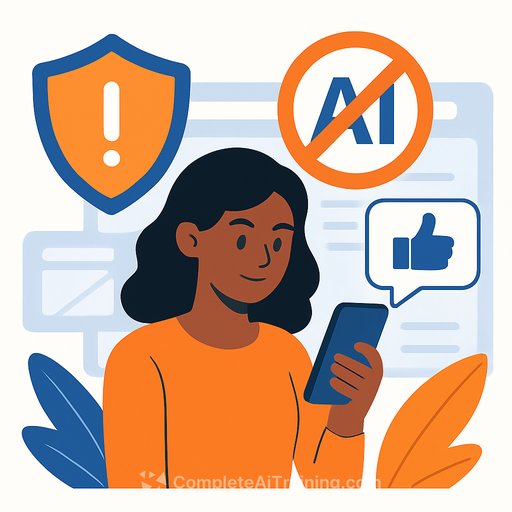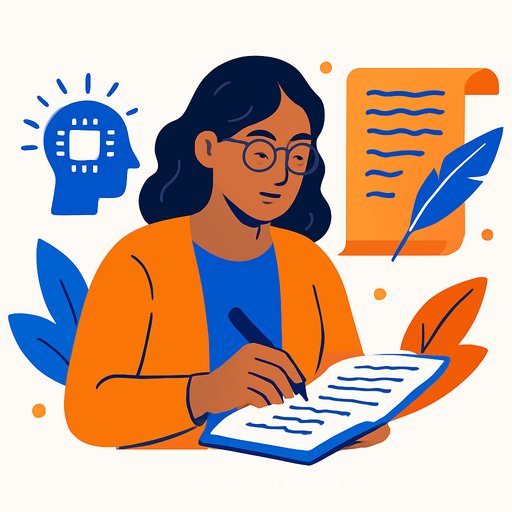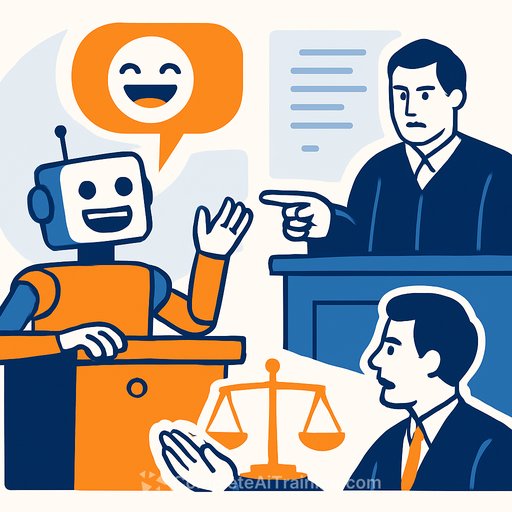Her paper was flagged as AI. Every writer should pay attention
A student spent hours on an assignment, turned it in, and got hit with: "Looks like AI." She posted her reaction on TikTok - upset, scared, and stuck with a zero.
The clip went viral because the fear is real. If you write for a living, the risk of being mislabeled is now part of the job.
The clip: stress, confusion, zero credit
In the video, she explained she'd put in serious time. The accusation came without proof, just a software score and a gut feeling.
Viewers responded fast. The consensus: she deserved a fair review, not a penalty by default.
The internet's best advice (and why it works)
People offered practical steps to protect your work and your name. These apply to students, freelancers, and staff writers alike.
- Save every draft. Use Google Docs version history to show timestamps and edits (how-to).
- Screen record writing sessions for key deliverables (Loom, OBS). Keep short clips, not full-day surveillance.
- Email outlines, notes, and sources to yourself to create dated proof.
- Store research, annotated sources, and rough outlines in one folder per project.
- Be ready to discuss your piece: structure, sources, and choices you made sentence by sentence.
Why detectors misfire - especially on clean, confident prose
Educators and admins added context: detectors guess. They don't prove authorship. That's why polished writing, consistent tone, or unusual punctuation can trip false positives.
Even major AI companies have said these tools are unreliable for deciding authorship (statement). Some seasoned writers report older, human-written work getting flagged. Craft gets punished, not cheating.
What this means for working writers
Clients and editors are starting to use detectors as gatekeepers. Your best defense is a transparent process and a paper trail.
- Set expectations in your contract or brief: whether you use AI at any stage, how edits happen, and that detectors are advisory - not final.
- Work in tools with audit trails (Docs, Notion, Obsidian + Git). Save snapshots at major milestones.
- Attach a "process note" for big pieces: outline, sources, word-count checkpoints, and a short summary of decisions.
- Deliver a source pack: links, PDFs, interview notes, and your annotated references.
- Keep a private style file: past clips that match your voice, so you can show continuity.
If you're accused: a calm, repeatable playbook
- Ask for specifics: which detector, what score, what threshold, and where your text supposedly tripped it.
- Share your evidence: version history, timestamps, notes, outlines, and any screen recordings.
- Offer a live proof session: walk through sources and reasoning; rewrite a paragraph while they watch.
- Bring receipts: link credible statements on detector limits (here).
- Propose a resolution: second review, partial rewrite, or a fresh prompt with an extended deadline.
- Keep communication in writing. Stay professional. If needed, escalate to a department head or client lead.
- For students: reference the academic integrity policy and due process. For freelancers: point to contract terms.
How her case ended - and the real lesson
She met with the professor. After a second look, the grade was corrected to 100%.
Her takeaway is the right one: document your process. Don't rely on a detector to understand your work. Make your proof obvious.
Build a proof-of-work stack
- Drafts: Google Docs version history, Scrivener snapshots, or a Git repo for plain-text drafts.
- Evidence: research folder, annotated PDFs, and a quick "why this structure" note per piece.
- Lightweight capture: short screen recordings for key sections or first drafts.
- Backups: email yourself outlines and major drafts for independent timestamps.
- Client-facing: include a one-page "process + sources" appendix for large projects.
Optional: If you use AI on purpose, do it openly
If AI helps you brainstorm or outline, disclose that early and define boundaries. Keep human judgment on claims, structure, and final language.
Want a curated view of tools that actually help writers ship better work? Check this list for copywriting tools.
Bottom line: write well, show your work, and keep receipts. That combo protects your reputation better than any detector ever could.
Your membership also unlocks:






